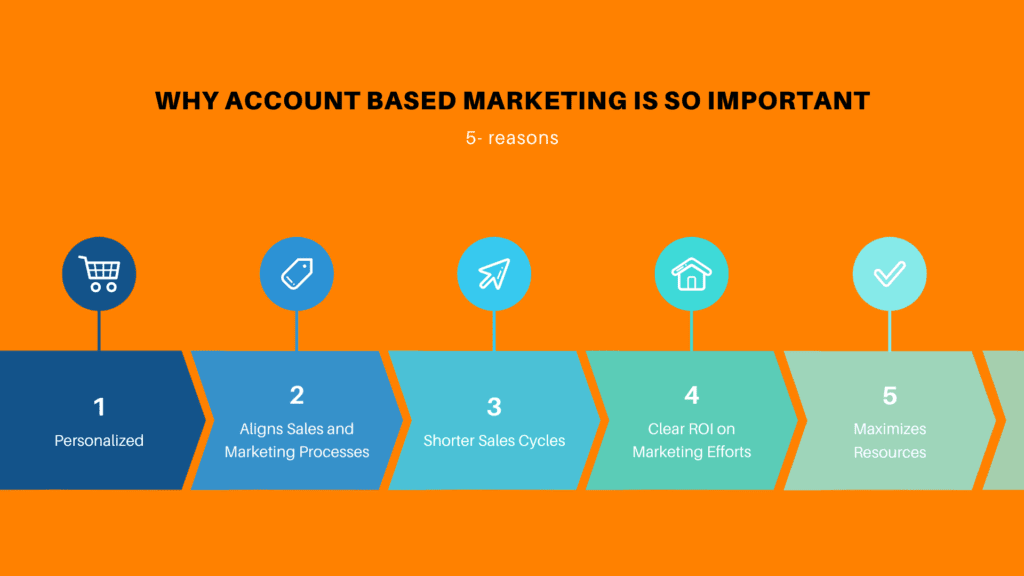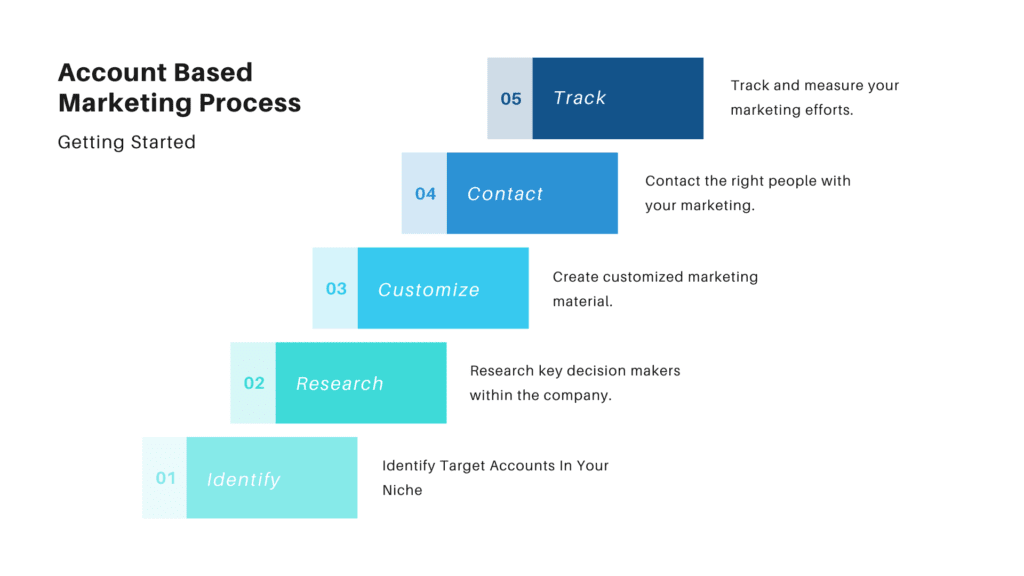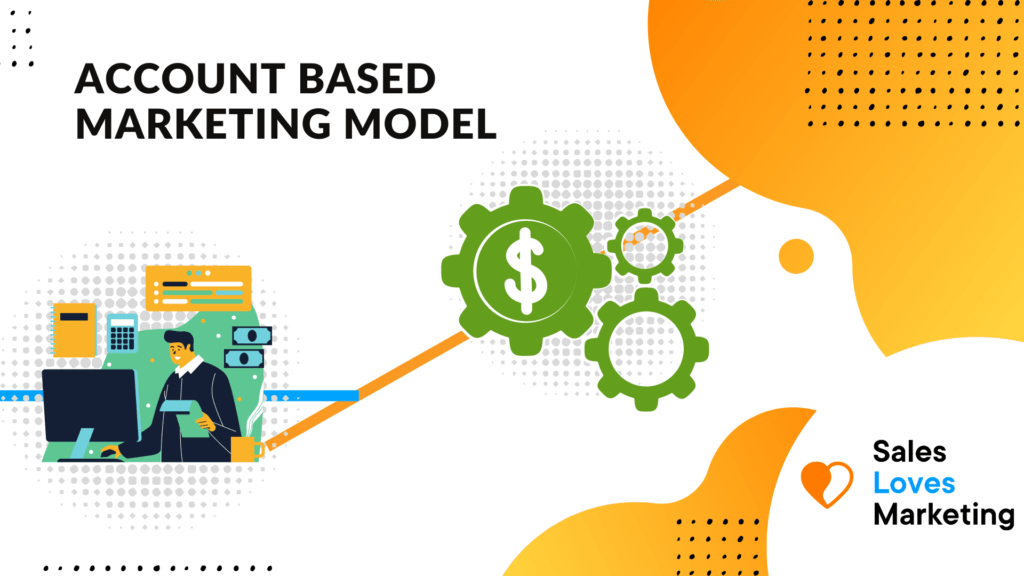What is Account-Based Marketing ABM?
Account-based marketing is a business model which focuses on attaining specific target accounts within a market. It uses targeted marketing campaigns designed to engage each account based on its attributes and needs.
Account-based marketing tends to be used with large scale brands that target larger accounts and helps companies with the following:
- Sell into larger accounts to companies with long sales cycles and larger deals
- Get involved in the sales process with strong value-added opportunities
- Targets key decision-makers who can benefit from a change for the companies products and services
The ABM model also markets to its existing customer base and engages in upselling and cross-selling to further improve customer satisfaction as well as increase revenue.
Why is Account-Based Marketing Important?
The ABM model offers many benefits for companies over other marketing strategies because it’s a much more focused and personalized approach to serving clients. Let’s take a look at 5 reasons why account-based marketing is important and effective.

Personalized Marketing Strategy
Instead of creating a standard marketing strategy, the ABM model focuses on creating a focused marketing campaign that is meant to draw the attention of a specific target account.
Recommended Reading: How To Identify Your Account Based Marketing Leads
The personalized marketing strategy will already know about the businesses’ customers and needs and will create a marketing strategy that focuses on helping the businesses with specific challenges. The ABM model doesn’t just market, it focuses on helping and improving the needs of a business.
Aligns Sales and Marketing Processes
The ABM model helps marketing teams and sales teams to work together in order to identify important target accounts and create a campaign that will help them get in touch with decision-makers. It requires a coordinated effort between sales and marketing which can help improve the overall marketing quality and drive revenue.
Shorter Sales Cycles
A longer sales cycle tends to involve more decision-makers and leaves companies more time and room to back out of a deal. This will slow down the sales process because it starts low within the organization and moves up to the decision-maker. The account-based marketing-sales cycle targets key decision makers directly which tends to shorten the sales cycle and time spent trying to pitch and sell its value.
Clear ROI on Marketing Efforts
Traditional marketing strategies have to test different ad copy, marketing campaigns, and other verticals in order to improve and stabilize its ROI. The ABM model on the other hand is much more precise. It’s easier to measure because you define your target accounts from the start instead of casting a wide marketing campaign. This defined focus drives higher marketing ROI and improves your time spent trying to capture leads.
Maximizes Resources
Since the ABM model has a direct focus on territories and key accounts, it uses less capital and time on traditional marketing efforts. This defined focus uses fewer resources and creates a marketing efficiency across the board.
How Effective is ABM
It’s worth noting that account-based marketing is not meant to replace traditional marketing strategies. The ABM model is meant to function as a complimentary marketing strategy in addition to existing marketing. It’s meant to improve the current marketing stack and deliver a more direct approach to marketing its services and products.
An ABM survey conducted by Terminus found that roughly 40% of marketers engaging in account-based marketing reported improved alignment with their sales teams. With this in mind, it’s clear that the ABM model binds expectations between sales and marketing teams. This in turn further improves the working dynamics.
How to Get Started With Account-Based Marketing?

Below is a step-by-step process you can follow to get started with account-based marketing.
Step 1: Identify Target Accounts In Your Niche
Look around for businesses whose needs align with your products and services that may be in a position to update and improve their processes. Identify their potential pain points and areas of improvement.
Step 2: Research Key People Within The Companies
Find out who the direct decision-makers of those companies are and how you can get in touch with them.
Step 3: Create Custom Marketing Material
Once you have researched the company, the people within the organization, along with their potential needs, it’s time to create customized marketing material that will show where their business could use improvements. Involve your marketing department in this process.
Step 4: Contact The Right People with Your Marketing
Launch your marketing campaign and stay in constant contact with the right people. Don’t involve too many people through this process as it can cause distractions.
Step 5: Track Your Marketing Efforts
It’s important to track how frequently your prospects are responding to your marketing and whether or not you are getting responses and meetings. If you notice a particular strategy is not working, make sure to make adjustments quickly.
Example of Account-Based Marketing
Lunch and Learns
An effective way to get in the door to key decision-makers is through lunch and learns. Lunch and learns take the pressure away from selling. They instead focus on building trust and educating the client on the product with the presence of food.
Lunch and learns can also be conducted by also taking the client out to coffee or friendly drinks after work. People will always remember the person that stopped by with food over a person who tries to pitch a product from the first meeting. It’s a great way to get your foot in the door and make people remember you.
